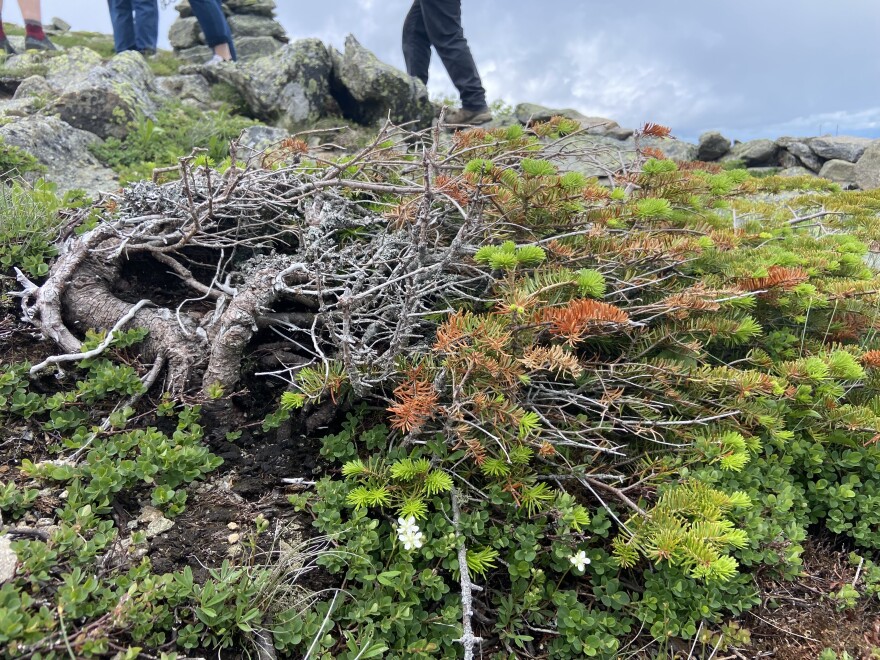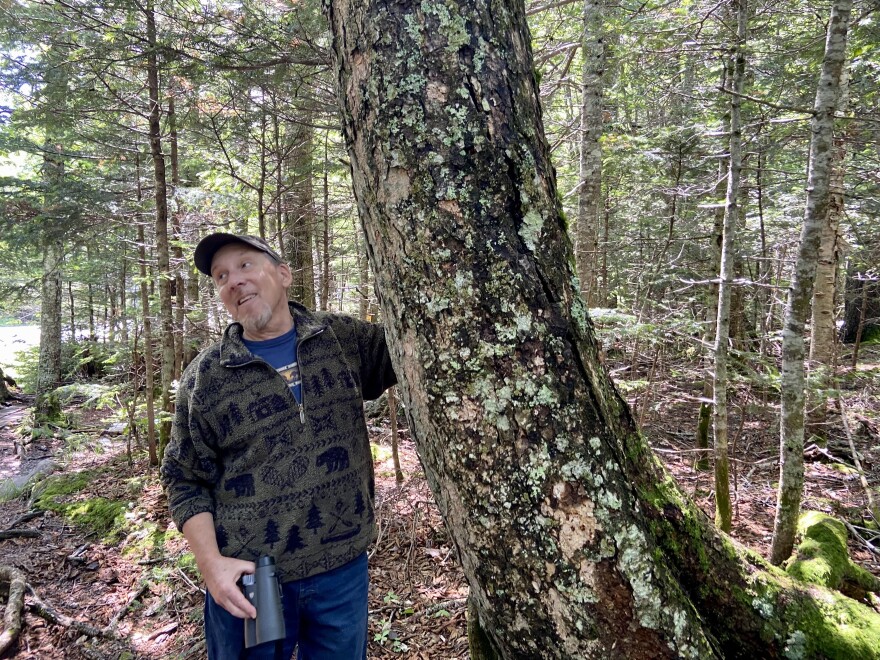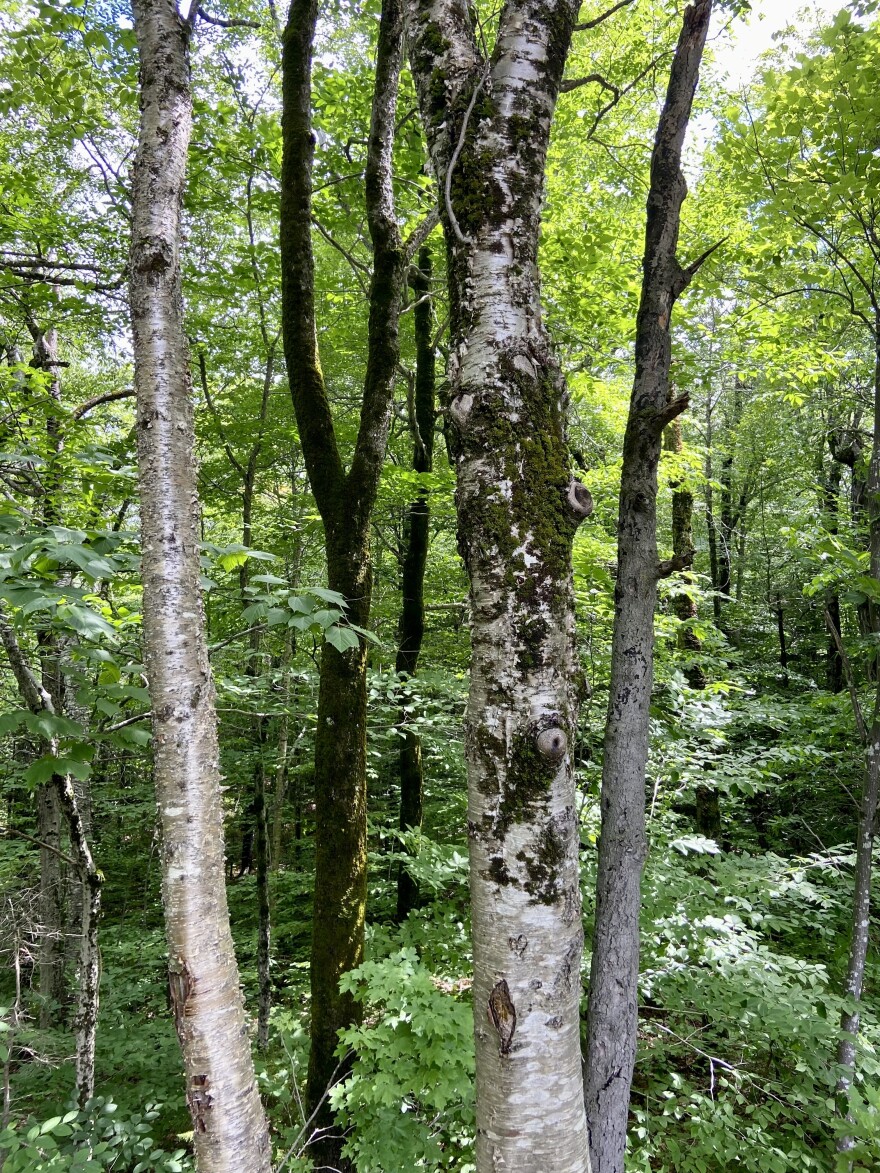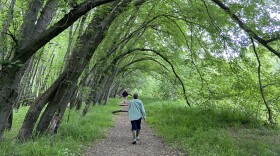The Something Wild team is on Mount Washington, exploring the ecological zones of New England’s highest peak.
In this second episode of our series, Dave Anderson of the Forest Society and Chris Martin of NH Audubon are exploring the different forest zones on the flanks of the mountain, below the treeline.
But first, let’s clear up a misconception about Mount Washington’s famous treeline. Finding an outcropping at about 4,500 feet in elevation, Chris and Dave look out over Tuckerman and Huntington ravines. Dave notes that the treeline is patchy and variable. The trees are affected by elevation and aspect, by how much sun they get, and how much exposure to the wind. There is no clear line of demarcation.
“So right here where we had a little bit of shelter from the prevailing wind, there's a forest,” he says. “And then when we step out here on this buttress, the wind has pruned everything down and we're back to just alpine vegetation and rock. So people talk about treeline, but there's really no line.”
But Chris notices a lot more bird habitat than in the alpine zone. “You’ve got more layers, you’ve got brush, bushy layers, and you’ve still got ground habitat too. So we're going to pick up in this area: white throated sparrow, dark-eyed junco, probably, probably Bicknell's thrush, and maybe some blackpoll warbler,” he says.

Any trees that manage to establish roots in the thin soil will be stunted and deformed by the wind. They call it “krummholz,” meaning crooked wood in German.
Just below the treeline, at around 3,500 to 4,500 feet, we enter the boreal forest.
“Standing here, we’re connected to all the Earth’s northern forests around the globe,” says Dave. “It’s characterized by the long, cold winters and short summers found only at the highest elevations and latitudes.”
This green global belt is named after Boreas, the Greek god of the North wind.
Red spruce and balsam fir, the evergreens, dominate in the boreal forest. The small needles of conifers have a thick waxy coat to prevent drying in winter, and the shape of the trees allows them to endure wind and heavy snow. The cones protect their seeds from the harsh environment.
Descending below 3,500 feet, standing right along the auto road, we find ourselves in a clearing, looking at a northern hardwood forest, dominated by broad-leafed deciduous trees.
The striped maple found in this northern hardwood forest is Chris’s favorite tree. Dave spies his favorite, the sugar maple.
“Sugar maple, yellow birch and American beech are the most dominant trees of the White Mountain National Forest,” Dave says. “But no oak. We’re too far north.”

The forest is multilayered at this elevation, with an understory canopy of saplings as well as a shrubby layer. And the forest can support all that growth because conditions aren’t as harsh as they were higher up.
“There's probably more nutrients here,” Dave says. “So that's why it's going to hardwoods because they can go back and re-leaf every single year. There's enough nutrients to support that.”

At lower elevations, more temperate hardwoods such as white ash and beech begin to mix in. Chris notices moss taking advantage of the vertical space and growing on trees.
Dave explains, “They're epiphytes. Birch trees having peeling bark is an adaptation to shed epiphytes, because some trees photosynthesize through their bark. The moss and the lichens that grow over their bark prevent them from making food. So if their bark peels off, they can shed those right off.”
Near the bottom of the mountain, it's a whole different suite of forest trees. This is the northern transition forest. Something Wild listeners in the Lakes and Monadnock regions may be familiar with this mix of trees, including ash, hemlock, cherry and red maple.
“We haven’t seen a pine tree all day because we're in the White Mountains, so we're north of its range,” says Dave. “What we're familiar with is an oak and pine forest in southern New Hampshire”
“Instead of starting at the bottom and going up,” says Chris. “I thought it was interesting to flip that upside down and start in the alpine zone and work our way down.”
Next time you’re on Mount Washington, take a good look around and appreciate the distinct forest zones. Dave’s favorite resource is Peter Marchand’s “North Woods: An Inside Look at the Nature of Forests in the Northeast.”
And thanks to Kevin Devine of the Mt. Washington Auto Road for being a terrific tour guide.

Something Wild is a partnership of the Forest Society, NH Audubon, and NHPR.











